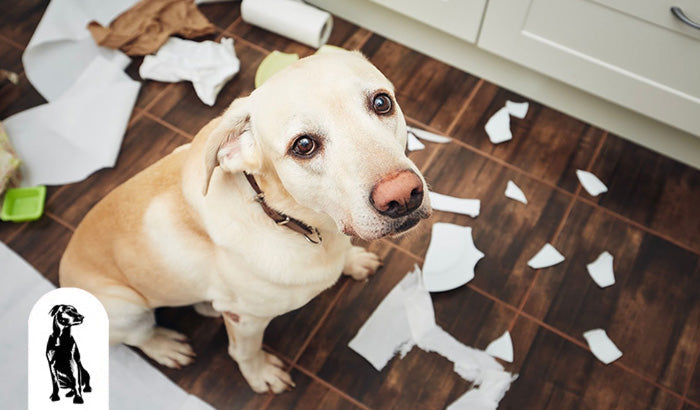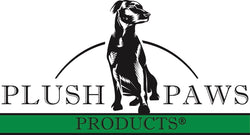
Dogs don’t talk, but they show stress in clear ways. Some shake, others hide, and a few act out with bad behavior. Stress affects dogs differently, and ignoring the signs leads to bigger problems. A calm dog stays happy, healthy, and well-behaved, but a stressed dog struggles to feel safe. Understanding the signals makes all the difference.
Common physical signs of stress
Dogs communicate stress through body language. Some signs seem small at first, but they reveal a lot about how a dog feels.
Excessive panting
Panting helps regulate body temperature, but heavy panting without exercise or heat points to stress. If a dog starts breathing hard for no reason, stress might be the cause. The faster the breathing, the more urgent the stress.
Pacing or restlessness
A stressed dog rarely sits still. Pacing back and forth, circling the room, or wandering without purpose signals high anxiety. This behavior shows up during thunderstorms, vet visits, or unfamiliar situations.
Shaking or trembling
Some dogs shake when nervous, even when they aren’t cold. This reaction often happens at the vet’s office or in a new environment. Trembling without a medical reason points to stress.
Excessive shedding
Stress triggers shedding, even in short-haired breeds. A dog that suddenly loses more hair than usual might be experiencing anxiety. This often happens at the vet or in high-stress environments.
Behavioral changes that signal stress
Avoidance or hiding
Some dogs try to escape stressful situations by hiding. They crawl under furniture, press themselves against walls, or find small spaces to retreat. A dog that suddenly avoids family members or refuses to engage might feel anxious.
Aggression or defensiveness
Stress pushes some dogs to act aggressively. Growling, baring teeth, snapping, or lunging at people or animals often happens when fear takes over. This defensive reaction comes from feeling trapped or unsafe.

Clinginess or seeking comfort
A stressed dog sometimes refuses to leave its owner’s side. Following every step, leaning against a person, or pawing for attention signals anxiety. While some breeds stay close naturally, sudden clinginess points to unease.
Destructive behavior
Chewing furniture, tearing up household items, or excessive digging often result from stress. Even dogs that don’t usually destroy things might do so when anxiety builds. Boredom also plays a role, but stress makes destructive behavior worse.
Digestive issues
Stress disrupts digestion. Diarrhea, vomiting, or a sudden loss of appetite happens when anxiety takes a toll. A nervous dog might refuse food, eat too fast, or gulp water excessively.
Excessive licking or chewing
Licking paws, chewing on skin, or constantly scratching without fleas or allergies often points to stress. Some dogs develop hot spots or bald patches from over-grooming due to anxiety.
Frequent urination
A stressed dog urinates more often, even if fully house-trained. Accidents in the house or sudden marking behavior happen when stress levels rise.
Yawning and lip-licking
Yawning doesn’t always mean a dog feels tired. A slow, exaggerated yawn signals stress. Lip licking and frequent nose touching without food nearby also point to anxiety.
Common causes of stress in dogs
Stress happens for many reasons. Identifying the cause helps eliminate the problem before it worsens.
Loud noises
Thunderstorms, fireworks, and loud household appliances trigger anxiety. Some dogs react to sirens, construction sounds, or even loud voices. Providing a quiet, safe space helps reduce noise-related stress.
New environments
Moving to a new home, visiting an unfamiliar place, or traveling in a car makes some dogs nervous. Change disrupts routine, and dogs thrive on familiarity.
Separation anxiety
Some dogs panic when left alone. Barking, destructive behavior, or bathroom accidents happen when separation anxiety takes hold. Training and comfort items ease this fear.
Unfamiliar people or animals
Some dogs feel uneasy when exposed to new faces or strange animals. Protective instincts or past experiences can influence a dog's reaction. Proper introductions and positive reinforcement may help reduce stress.

How to help a stressed dog
Recognizing stress is the first step. Taking action improves a dog’s emotional well-being and strengthens the bond between pet and owner.
Create a safe space
Every dog needs a quiet place to relax. A cozy bed in a low-traffic area helps reduce anxiety, and crates, when introduced properly, provide a den-like retreat.
Stick to a routine
Dogs thrive on consistency. Feeding, walks, and bedtime should happen at the same time every day. Predictability reduces uncertainty and keeps stress levels low.
Use calming techniques
Soft music, pheromone diffusers, or gentle massage soothes anxious dogs. Slow, steady breathing near a stressed dog helps regulate its emotions.
Exercise and mental stimulation
Physical activity and engaging games burn off nervous energy. Walks, puzzle toys, and obedience training keep a dog’s mind and body occupied.
Positive reinforcement
Rewarding calm behavior builds confidence. Encouraging relaxation with treats, praise, or affection teaches a dog to associate calmness with good things.
When to seek professional help
Some dogs need extra support. If stress symptoms continue despite changes, professional help makes a difference.
Consult a vet
Medical conditions sometimes mimic stress symptoms. A thorough check-up rules out underlying health issues, and a vet provides advice on calming supplements or medication if needed.
Work with a trainer
Certified trainers help correct stress-related behaviors. Structured training builds confidence and reduces fear responses.
Try a behaviorist
A professional behaviorist specializes in anxiety and stress disorders. They assess triggers and create customized plans to improve a dog’s well-being.
Reducing stress leads to a happier dog
A relaxed dog feels safe, listens better, and enjoys life more. Recognizing stress signals and addressing them early prevents bigger problems. Whether the cause is loud noises, separation, or unfamiliar environments, small changes make a big difference.
Taking the time to understand and help a dog through stressful situations strengthens trust and builds a happier, healthier companion.
Keep your pet calm and stress-free
Loud events, unfamiliar environments, and sudden changes trigger anxiety in pets. Fireworks, thunderstorms, or crowded gatherings create overwhelming situations that lead to stress. Recognizing the signs early helps keep pets calm and comfortable during noisy occasions.
Simple strategies ease stress and make a huge difference. Creating a quiet, secure space, using calming aids, and providing familiar items help pets feel safe. Desensitization training reduces fear responses to loud noises over time. Consistency and reassurance build trust and prevent unnecessary anxiety.
For pet care solutions designed to reduce stress, explore high-quality products that promote relaxation. Whether it’s noise-reducing accessories, comfort items, or calming treats, the right tools help pets feel more secure. A happy, stress-free pet enjoys celebrations without fear or discomfort.
Keep your pet calm and stress-free with Plush Paws
Loud events, crowded places, and sudden changes rattle even the calmest pets. Fireworks, thunder, and packed gatherings crank up their anxiety fast. Plush Paws helps you get ahead of the panic.
Add familiar items, keep routines steady, and let our products work behind the scenes to ease the fear.
Plush Paws delivers trusted tools that support your pet through every celebration, from noise-reducing gear to soothing treats. Shop now and help your furry friend stay calm, secure, and stress-free — no matter what’s going on outside.
